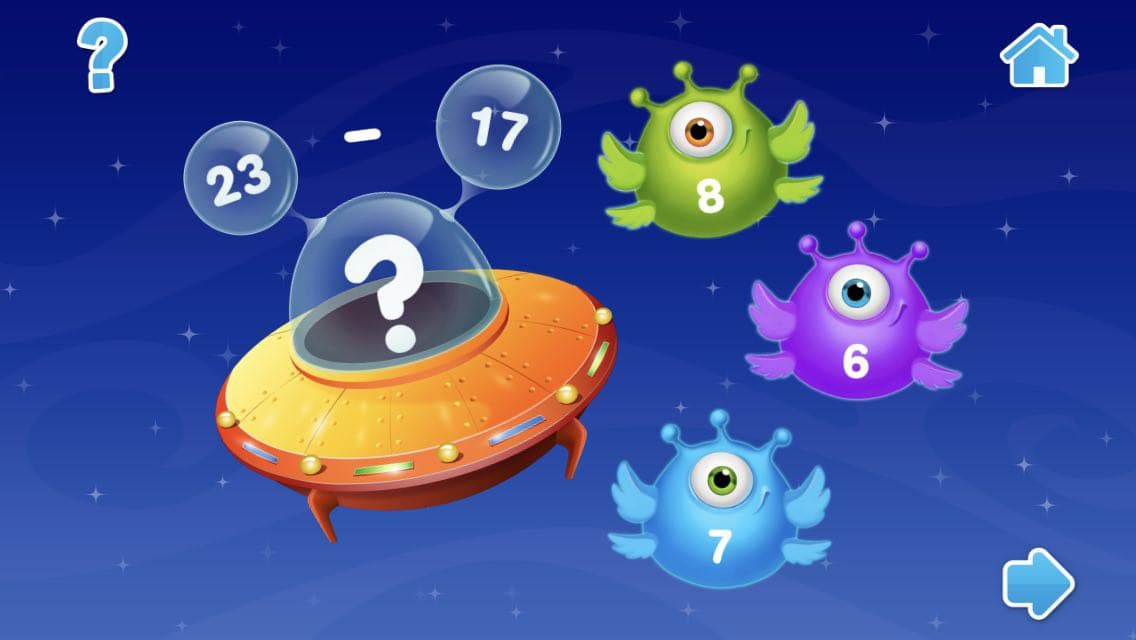Benefits and Activities of Using Reading Games for Kids
Dec. 2, 2019
It’s no secret that here at Kids Academy, we believe in making learning fun and engaging! From toddlerhood through elementary school, we know that children learn and retain more when both instruction and practice is enjoyable for kids. Afterall, repetition is key to effective instruction, and who would want to learn the same thing over and over if it’s not even remotely interesting or fun?
We’ve written a lot about gamification in the classroom, including ideas for engaging activities for subjects across the curriculum. But when it comes to reading instruction, you might be wondering how any parent or teacher can mix in a few games into an activity that seems so straight forward. When it comes to reading comprehension, what more can be done besides the standard close reading and discussion question strategies?

We’re here to tell you that everything can be turned into games in the classroom, even in reading! Let’s take closer look its many benefits before moving on to how to use them effectively. Then, we’ll even share with you our best ideas for reading games to play in class or in a homeschool or tutoring setting!
The Many Benefits of Using Games for Reading Comprehension
As adults who were once teenagers ourselves, we know that at a certain age, kids lose interest in reading. In fact, according to a recent study, more than half of kids say they do not like reading for fun by the time they are in middle school. What starts out as fun in preschool, or when a child is first learning to read, turns into hard work and drudgery thanks to a number of factors children face in higher grade levels. Some of these factors include:
- Using a computer or video games as a primary means for entertainment
- Parents or caregivers who do not read aloud to kids
- Less choice in what to read
- Too much pressure from homework or classwork
- Boring instruction that feels too much like “work”
While it’s no secret that kids are spending more time on screens than ever before, it seems like the sharp decline in reading enjoyment can certainly stem from the fact that reading turns into a chore the older a child gets. This is where reading games for kids come into play! When teachers and parents use engaging games to liven up instruction and practice, children continue to associate reading with fun instead of with hard work.
By using educational games in the classroom or homeschool, learning speed reading concepts is kept fresh and enticing. This allows students to get the repetition they need to learn increasingly abstract comprehension concepts as they explore new topics and learn techniques help them understand difficult texts.
How to Use Games Effectively in the Reading Classroom
In order to use games in a meaningful way, it’s important to remember that they are best utilized as a review of learned material. Whether you’re teaching your child at home, or your students in a classroom, use the following method to introduce games into your reading instruction:
-
Explicitly teach new concepts
4th graders can’t play a game concerning figurative language if they haven’t even learned what a metaphor or simile are! That’s why it’s important to teach the concept directly before introducing any game. For an easy way to increase focus, just explain to children that learning the new concept will help them learn to play the game. That way, students know that they’re about to have some fun!
-
Use close reading activities and free printable 1st grade worksheets to practice the new skill
One favorite activity is a color comprehension worksheet that tasks kids with reading a short passage and highlighting several aspects of a text, like character, setting, conflict, and more. This might be the “work” portion of any learning task, but it is necessary to gain practice using the concept or skill that was just taught. The key here is to use these activities effectively and in moderation. Once students grasp the concept well enough to move onto games, move on to avoid making classwork boring and overly repetitive!
-
Use games to review the concept that was just learned
The gaming aspect should come into play as a review activity. It also livens up a lesson cycle and gives children something to look forward to or work towards. Games also serve as a way to promote collaboration and partnership, but in order to get to this level, kids must understand the concept or else the game will be unsuccessful.
Now that the benefits are obvious and the steps towards using games are clear, lets discover some of the best games to use for reading comprehension!
Games that Can Be Used in Reading Class or at Home

Pick a Path! A Comprehension Game
Here’s a great activity that can be played at home or adapted for a small classroom as part of a station or center activity. All you’ll need is to read a popular children’s book beforehand, like Cat in the Hat. When ready to play, gather markers, giant Post-Its, or construction paper and painter’s tape. Whether at school or at home, don’t forget to practice the concepts your child will be looking for before trying out the game!
To get started, prepare comprehension questions ahead of time, focusing on the skills you are working on with your child or students. These can be questions about characters, setting, conflict, plot, etc. Write the answers down on the construction paper or giant Post-Its using markers. Create the same number of distractors, or incorrect answers, for the questions you will be asking.
Create two paths on the floor containing a mixture of correct/incorrect answers. Kids will listen to each question and answer by jumping on each paper on the floor. At the end of each path should be a paper bag. One will contain a prize, and the other will be empty. Children who jump on the correct sequence of answers will get a small prize, while others can repeat the process until they win!
Play a Game of War
This classic card game can easily be transformed into a game that practices vocabulary. Create a deck of card containing the targeted words and assign point values accordingly. Find a template online to make cards yourself, or simply use sticky notes on regular cards to create a deck. Split the deck between the players, with the point value being equal among all players.
During gameplay, in each round, the players will read their word, define it, name synonyms and/or antonyms, or complete any task you deem fit for the level of the players. At the end of the round, the child with the highest point value wins all of the cards to keep. If any player is unable to define or name an answer, they lose the point value of that card and loses the round automatically. If there’s a tie, a “war” begins, where those players throw down three cards and flips the next for all to see. After reading the word, defining, etc., the player with the highest score value keeps all the cards. At the end of the game, the child with the most cards, wins!
Reading Comprehension Cootie Catchers
Remember making cootie catchers with your friends in elementary school? They’re those paper fortune tellers that one child presents to another, with the other picking a flap that reveals a message. Why not make cootie catchers that reveal comprehension questions instead of a fortune, to create a quick and simple partner review game?
Simply find a template or instruction video the web to create cootie catchers. You can find a template that has premade reading questions on sites like Teachers Pay Teachers, or you can create your own and individualize them for your class! Just be sure the questions can be applied to any text you may be studying in class! For example, the outermost flaps may have general words or colors to choose from, while the next layer can prompt kids to choose a category, like setting, characters, or problem and solution. The final layer may contain a general question that asks the child to think about something specific about one of the categories above.
To play, provide children with cootie catchers and have kids choose a partner, giving them one per pair. Instruct kids to play several rounds and face off against one another. The student who answers the most questions correctly wins!
When we think of utilizing games in the classroom, most of us think of objective subjects with clear answers, like math or social studies. However, with a bit of thoughtful planning, engaging games can be brought into the reading classroom as well! Get started using the ideas above to encourage little readers to make reading a more positive and fun-filled activity that kids will continue to love!


.jpg)








